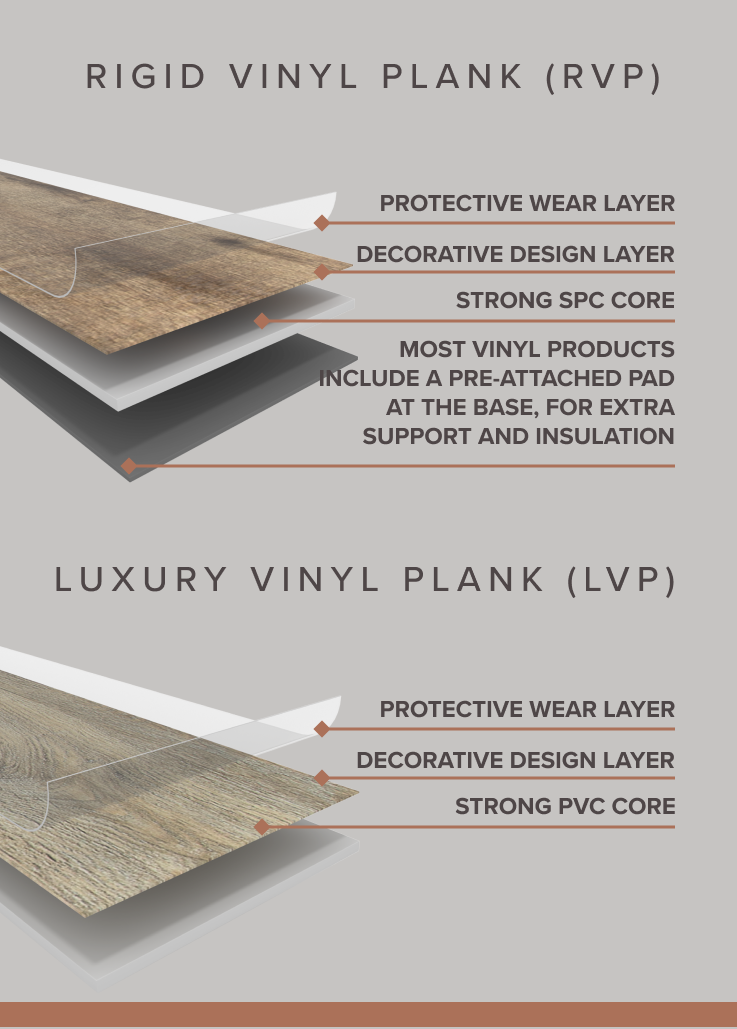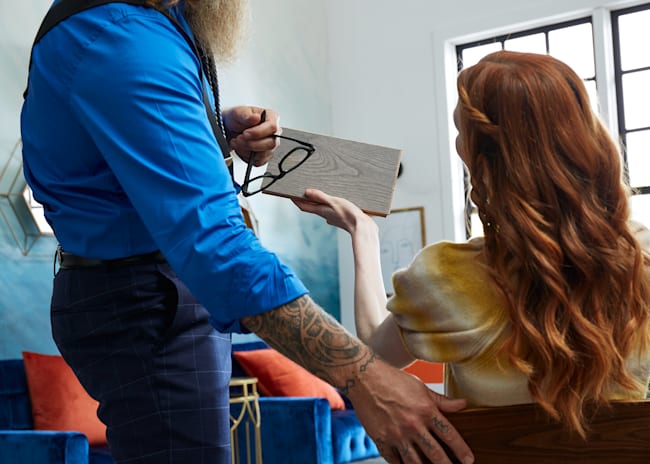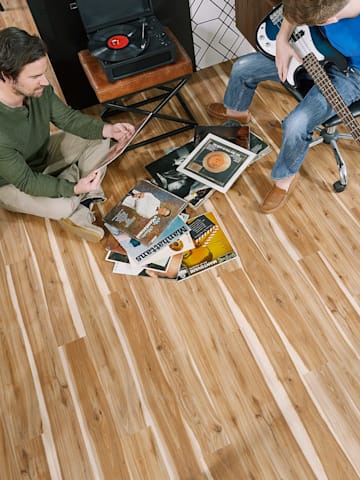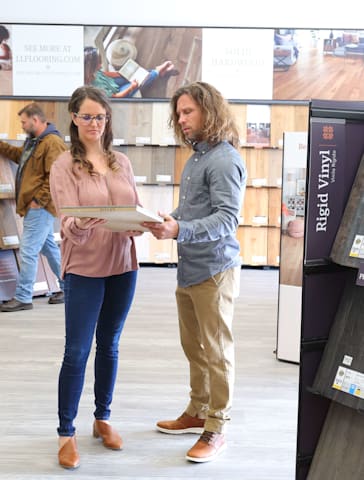- Home
- Education
- Flooring Basics
- Rigid Vinyl Plank vs. Luxury Vinyl Plank
Rigid Vinyl Plank vs. Luxury Vinyl Plank
Choosing between rigid and luxury vinyl plank can be simple with the right expertise. Find the right option for your next project.
Rigid vs. Luxury Vinyl Plank: What You Need to Know
The great debate: rigid vinyl plank versus luxury vinyl plank. If you're looking for an answer, take a few moments to learn about the attributes and characteristics of each product. Both of these options are waterproof and have a wide selection of designs, so choosing between rigid vinyl plank (RVP) and luxury vinyl plank (LVP) ultimately comes down to where you want to install your flooring and why.
What Is the Difference Between LVP and RVP?
Although they're both categorized as vinyl flooring, LVP and RVP are constructed out of different materials. At LL Flooring, our LVP products have a PVC-based core, whereas all our RVP has a stone-polymer composite (SPC) core. This differing construction gives each product slightly different features and benefits.
- The SPC core gives RVP better resilience to temperature changes—caused by direct sunlight or changing seasons.
- The core construction means LVP needs transitions every 30 feet, while RVP needs them every 60 feet.
- LVP can be constructed thinner, while RVP is usually thicker.
- This means that RVP is a better option for hiding subfloor imperfections, as LVP can contour to them.
- Some RVP options come with a pre-attached pad for added stability and insulation.
Beyond composition, there are some other key differences too:
- Both types have options for click-float and glue-down installation, but LVP is also available in super simple peel-and-stick.
- RVP offers a greater selection of surface textures, which could be better if you're looking for an authentic look.
Similarities Between LVP and RVP
LVP and RVP share several features. First, both products are waterproof, which makes them a practical addition to any room that may encounter spills or splashes. Next, they are both composed of the same three key layers:
- Wear layer: This upper layer gives both types their resistance to scuffs and scratches.
- Décor layer: This is what gives the flooring its design.
- Core layer: The stabilizing layer underneath.
The wide variety of décor layers available for both LVP and RVP means there are many design, texture, and style options for you to choose from, whether you want wood-look, stone-look, or patterned flooring. You'll be sure to find a match for almost any interior style, from farmhouse to modern to shabby chic.
Both LVP and RVP also have options for easy installation, like click-lock and glue-down, or peel-and-stick for LVP. With the right tools, and our installation guides, LVP and RVP are well suited for DIY projects.
What Is LVP?
LVP, or luxury vinyl plank, is vinyl flooring with a PVC-based core. Today’s vinyl flooring looks similar to real wood and stone, and possesses textures that old-school vinyl options couldn’t achieve. Wood-look LVP planks and stone-look LVP squares closely mimic the natural materials upon which they're based.
At LL Flooring, our LVP flooring ranges in thickness from 1.5 to 5 mm, with wear layers from 6 to 22 mils thick. The thickness of the LVP and the wear layer will affect which areas of your home you'll consider for installation. Thinner wear layers are good for light traffic areas, whereas you'll want to consider a thicker layer for more protection in busy spaces.
When it comes to installation, LVP is designed with ease in mind. For instance, it can be manufactured with an interlocking float-and-click system, in which, the edges of each plank simply click together. This installation method creates what's known as a floating floor, so no adhesives or nails are needed to attach it to the subfloor below. Similarly, peel-and-stick LVP comes with the adhesive pre-applied, so there's no need for you to invest in extra installation materials. When installing LVP, you’ll need transitions every 30 feet to ensure your floor maintains its stability.
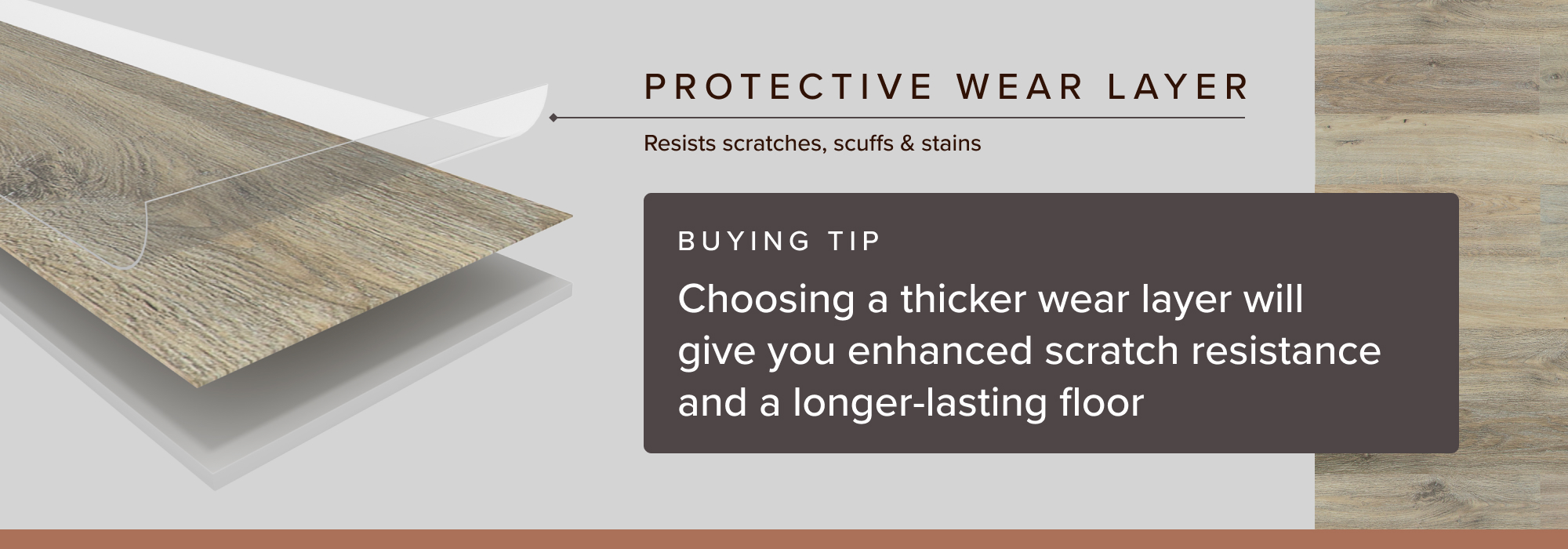
What Is RVP?
RVP, or rigid vinyl planking, is a type of vinyl floor with a core engineered for added stability. This core is made from stone-polymer composite (SPC) or wood-polymer composite (WPC). At LL Flooring, we exclusively use the sturdier SPC because it is more dent-resistant and remains stable in fluctuating temperature conditions.
RVP's substantial core makes it a smart choice for heavy-use and high-foot-traffic rooms, or for rooms where you want to place heavy furniture without fear of leaving dents. The SPC core gives RVP more resilience than LVP, and can help it to feel more solid underfoot.
You can also find a greater selection of widths and lengths in our RVP selection. This makes it a popular choice for commercial flooring because it means you only need to add transitions every 60 feet, which is ideal for longer, more open spaces.
RVP flooring features a DIY-friendly click mechanism that you can either lay down as a floating floor, or glue down with an LLF-approved adhesive if you need extra security.
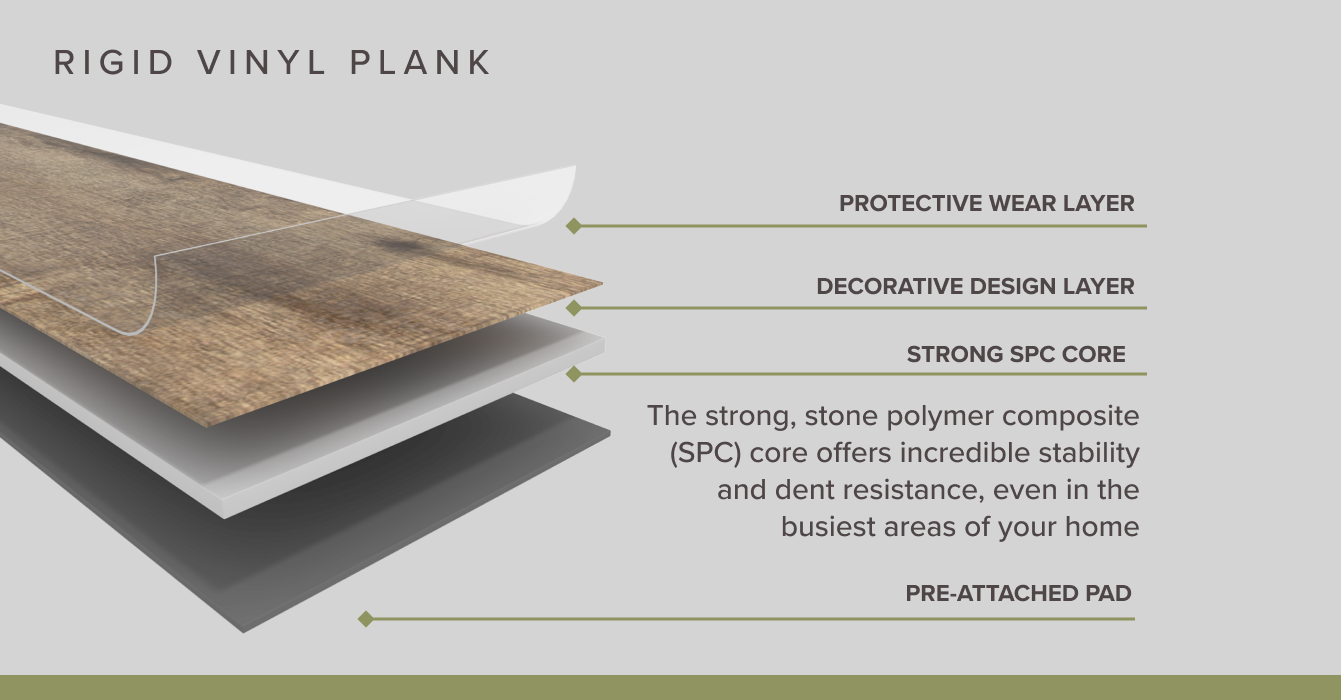
Which Is Better?
The short answer is neither! But the SPC core of RVP does give it some added benefits. When comparing LVP and RVP, what it all comes down to is the place you will install the flooring and its intended use. Both are 100% waterproof, so they’re ideally suited to wet rooms like kitchens and bathrooms. Both offer easy installation options, which makes them ideal for a DIY-friendly project. And both come in a wide variety of styles and designs.
When choosing between the two, you’ll want to think about how much foot traffic goes through the installation area as well as what you use that room for. In quieter rooms such as formal lounges, studies, and bedrooms, you can use thinner planks and wear layers. In higher-traffic areas, you’ll want to consider thicker wear layers and more substantial planks.
RVP is better at hiding minor subfloor imperfections as well as resisting fading and seasonal temperature changes. It also has improved dent resistance and sound insulation, so it's just right for chilly basements or playrooms that could otherwise be loud. LVP is loved for its variety of designs, installation ease, and overall budget-friendliness.
